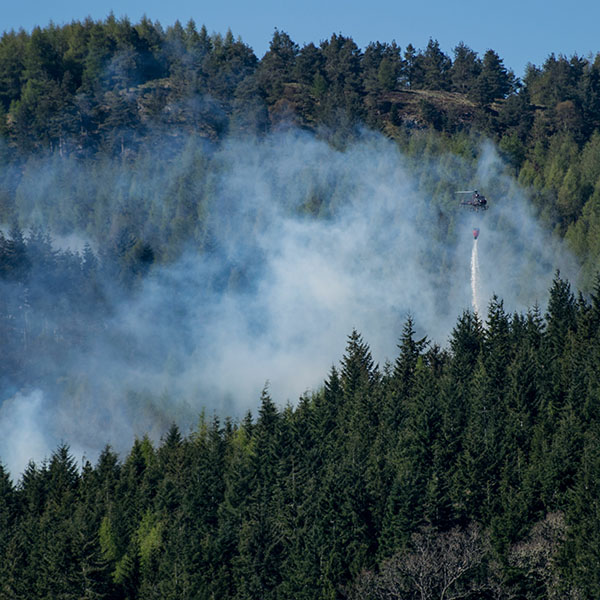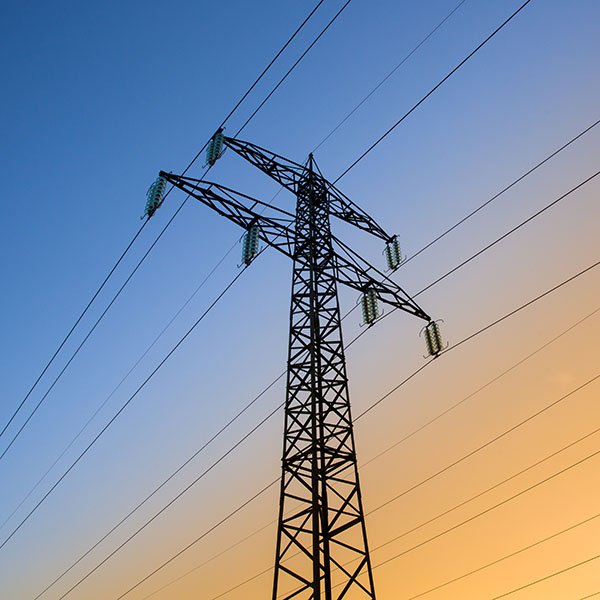The TID Board of Directors annually approves a revised and updated Wildfire Mitigation Plan. The plan is reviewed by an independent evaluator ever four years.

While we’re fortunate that the majority of TID’s service area is not designated as a high fire threat area, we know that there are still risks and we are always looking for ways to minimize them.
To reduce the risk of wildfire and improve safety, we’re working to enhance wildfire prevention, put new and improved safety measure in place and make our electric system more resilient. The safety of our employees, customers and community is our top priority.
While we’re fortunate that the majority of TID’s service area is not designated as a High Fire Threat area, we know that there are still risks that must be mitigated.
If extreme conditions present a high risk of fire, a utility may, as a last resort, temporarily turn off power to protect public safety. The decision to turn off power requires a balancing of several factors, including but not limited to:
While the risk of wildfires is low in the TID service area, a public safety power shutoff could impact local communities just outside the TID service area.
Even if the power is shutoff to a nearby city outside the TID service area, this will not affect the distribution of power within our service area. The TID controls both the transmission and distribution on the lines within our District. As part of TID’s practice as a Balancing Authority we have put in place the resources and internal generation capabilities that enable us to reliably provide power in any matter of circumstances.


Visit CAL FIRE Ready for Wildfire for more information on how to prepare your home and property for the threat of wildfire. For statewide wildfire recovery resources, visit California Governor’s Office of Emergency Services.

At TID, we prepare all year to make sure you have safe and reliable electric service at your home or business. We want to offer you tools to prepare your home and family in case of an emergency.
Click here for ways to prepare your home/business for an extended power outage.

We know how important reliable electric service is to our customers, especially those using medical equipment or who require refrigerated medications. We make every effort to prevent outages but cannot guarantee that they will not occur. In case of emergency, please be prepared and find a location that will have emergency backup power and have a plan to evacuate to that location if necessary. TID’s goal is to provide as much notice as possible of a public safety power shutoff to minimize the impact on our customers and community. A sudden onset of conditions could impact our ability to provide that notice. Likewise, we may not have advance knowledge of PG&E’s decision to shutoff power.

Each situation is unique. In areas of greater risk, including the La Grange and Diablo Grande areas, outage times may be longer depending on the severity and urgency of the situation. In the case of a PSPS, the utility, whether TID or PG&E will have to confirm the decrease in risk factors for the area, inspect the lines for damage and other potential risks and then re-energize the lines. Depending on the size of the area affected, this could take several days.

When possible, PG&E will provide PSPS notices 48 hours in advance, 24 hours in advance, just before the power is turned off, during the PSPS, and once power is restored.
Whenever possible, TID will provide potentially impacted customers with notice, following a similar schedule, before shutting power off, using all available channels to reach customers and other stakeholders with outage information. The sudden onset of conditions could impact TID’s ability to provide advance notice to customers. If conditions allow, we’ll communicate with customers in the following ways:
Key Account customers will be contacted directly by their TID representative.

This situation is highly unlikely. Turning off the power is a last resort to maintain public and customer safety during extreme fire risk conditions. If no significant risk factors are present it I unlikely that a PSPS would be warranted.

Fortunately, the large majority of the TID service area is not at risk of wildfire, nor does it present the combination of criteria that may necessitate the use of PSPS.
Even the District operations in the eastern- and western-most points of our service territory that are in High Fire Threat areas, are not anticipated to require the use of PSPS. However, some TID customers in the West Side Fire Zone are provided power across PG&E-owned power lines. Should PG&E decide to shutoff power to these lines, and we anticipate they will, due to the greater risk in this area, it is likely TID customers in that area will lose power.
All customers in high fire threat areas, and throughout the District, should be prepared for the possibility of extended outages of any kind.

Turning off the power is a last resort to maintain public and customer safety during extreme fire risk conditions. The factors that determine if a utility will implement a Public Safety Power Shutoff (PSPS) depends on the circumstances of each situation.
A utility will consider a combination of many factors when making a decision to implement a power shutoff. These factors include but are not limited to:
One situation that may warrant a public safety power shutoff is an active fire. An active fire may necessitate disconnecting power to an area surrounding the fire for the duration of the emergency situation to provide for public safety. Power would be restored once the fire is out, system integrity and safety can be confirmed, and power can be safely reconnected.

Fortunately, the large majority of the TID service area is not at risk of wildfire. The District’s biggest risk of wildfire lies near our operations in the eastern- and western-most points of our service area.
The western most end of the District, west of Interstate 5 includes the community of Diablo Grande as well as residents along Del Puerto Canyon Road. This area runs from the edge of the Central Valley to the crest of the Coast Range. The West Side Fire Zone contains 77 miles of overhead distribution lines and 18 miles of underground distribution lines.
At the east end of the district is the town of La Grange and the area between Don Pedro Reservoir and Turlock Reservoir. This area is in the foothills of the Sierra Nevada and includes riparian vegetation on the south bank of the Tuolumne River. The town of La Grange is located here and the area is crossed by Highway 132. The East Side Fire Zone contains 34 miles of overhead distribution line and 35 miles of transmission line in high fire risk areas on the east side of the District.

TID is taking proactive and precautionary measures to help reduce wildfire risks and help keep our customers and the communities we serve safe. While TID always practices sound, annual fire mitigation efforts, vegetation management crews have been especially busy in 2019 inspecting, maintaining and clearing large areas of vegetation under and near power lines in the foothills and in and around TID facilities.
In those areas of the District that are considered High Fire Risk areas, TID has instituted a non-reclosing strategy that prevents lines that have tripped off due to a fault on the line from reclosing and allowing the distribution of power until the line has been inspected and confirmed safe. TID has also converted the majority of the equipment used in the identified high fire threat areas to equipment that will not have the potential to generate sparks while in use.
TID will soon be presenting a summary of our fire prevention efforts in the TID Fire Mitigation Plan which will be presented on our website in August.